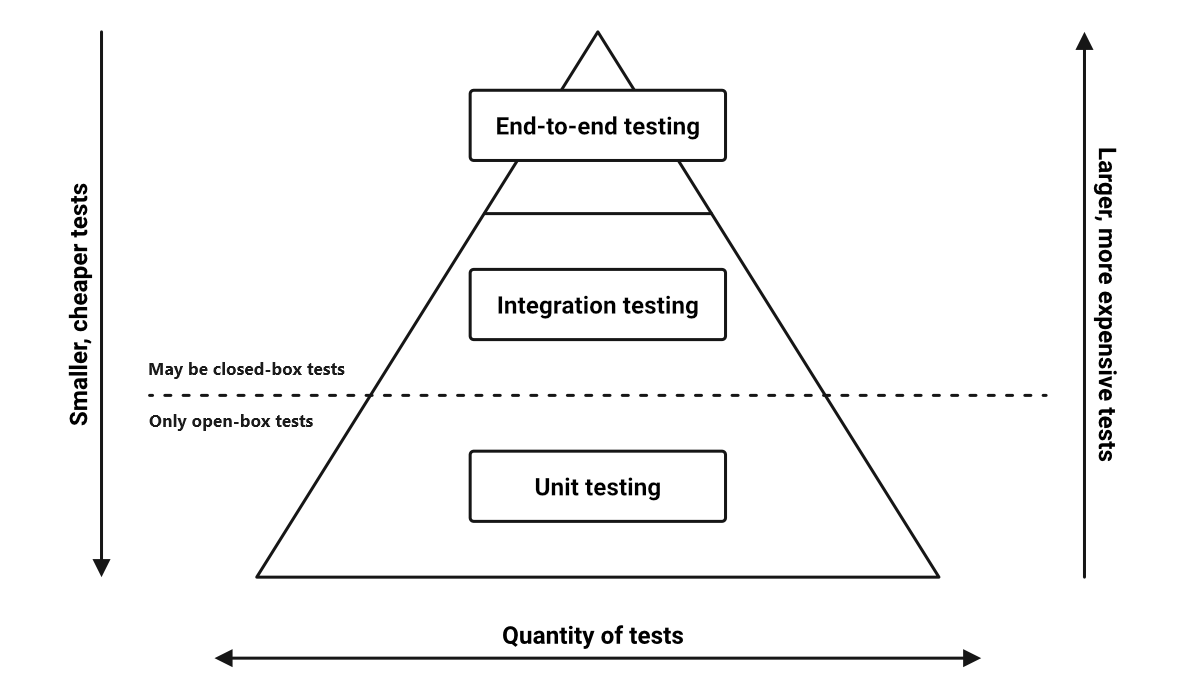Rethinking Testing in Production

With products becoming more interconnected, trying to accurately replicate
third-party APIs and integrations outside of production is close to
impossible. Trunk-based development, with its focus on continuous
integration and delivery, acknowledges the need for a paradigm shift. Feature
flags emerge as the proverbial Archimedes lever in this transformation, offering
a flexible and controlled approach to testing in production. Developers can now
gradually roll out features without disrupting the entire user base, mitigating
the risks associated with traditional testing methodologies. Feature flags
empower developers to enable a feature in production for themselves during the
development phase, allowing them to refine and perfect it before exposing it to
broader testing audiences. This progressive approach ensures that potential
issues are identified and addressed early in the development process. As the
feature matures, it can be selectively enabled for testing teams, engineering
groups or specific user segments, facilitating thorough validation at each step.
The logistic nightmare of maintaining identical environments is alleviated, as
testing in production becomes an integral part of the development workflow.
Enterprise Architecture in the Financial Realm
Enterprise architecture emerges as the North Star guiding banks through these
changes. Its role transcends being a mere operational construct; it becomes a
strategic enabler that harmonizes business and technology components. A
well-crafted enterprise architecture lays the foundation for adaptability and
resilience in the face of digital transformation. Enterprise architecture
manifests two key characteristics: unity and agility. The unity aspect
inherently provides an enterprise-level perspective, where business and IT
methodologies seamlessly intertwine, creating a cohesive flow of processes and
data. Conversely, agility in enterprise architecture construction involves
deconstruction and subsequent reconstruction, refining shared and reusable
business components, akin to assembling Lego bricks. ... Quantifying the success
of digital adaptation is crucial. Metrics should not solely focus on financial
outcomes but also on key performance indicators reflecting the effectiveness of
digital initiatives, customer satisfaction, and the agility of operational
models.
Cloud Security: Stay One Step Ahead of the Attackers

The relatively easy availability of cloud-based storage can lead to a data
sprawl that is uncontrolled and unmanageable. In many cases, data which must
be deleted or secured is left ungoverned, as organizations are not aware of
their existence. In April 2022, cloud data security firm, Cyera, found
unmanaged data store copies, and snapshots or log data. The researchers from
this firm found out that 60% of the data security issues present in cloud data
stores were due to unsecured sensitive data. The researchers further observed
that over 30% of scanned cloud data stores were ghost data, and more than 58%
of these ghost data stores contained sensitive or very sensitive data. ...
Despite best practices advised by cloud service providers, data breaches that
originate in the cloud have only increased. IBM’s annual Cost of a Data Breach
report for example, highlights that 45% of studied breaches have occurred in
the cloud. What is also noteworthy is that a significant 43% of reporting
organizations which have stated they are just in the early stages or have not
started implementing security practices to protect their cloud environments,
have observed higher breach costs.
Five Questions That Determine Where AI Fits In Your Digital Transformation Strategy

Once you understand the why and the what, only then can you consider how your
organization can use insights from AI to better accomplish its goals. How will
your people respond, and how will they benefit? Today’s organizations have
multiple technology partners, and they may have many that are all saying they
can do AI. But how will your organization work with all those partners to make
an AI solution come together? Many organizations are developing AI policies to
define how it can be used. Having these guardrails ensures that your
organization is operating ethically, morally and legally when it comes to the
use of AI. ... It’s important to consider whether your organization is truly
ready for AI at an enterprise or divisional level before deciding to implement
AI at scale. Pilot projects can help you determine whether the implementation
is generating the intended results and better understand how end users will
interact with the processes. If you can't achieve customization and
personalization across the organization, AI initiatives will be much tougher
to implement.
A Dive into the Detail of the Financial Data Transparency Act’s Data Standards Requirements

The act is a major undertaking for regulators and regulated firms. It is also
an opportunity for the LEI, if selected, to move to another level in the US,
which has been slow to adopt the identifier, and significantly increase
numbers that will strengthen the Global LEI System. While industry experts
suggest regulators in scope of FDTA, collectively called Financial Stability
Oversight Council (FSOC) agencies, initially considered data standards
including the LEI and Financial Instrument Global Identifier published by
Bloomberg, they suggest the LEI is the best match for the regulation’s
requirements for ‘Covered agencies to establish “common identifiers” for
information reported to covered regulatory agencies, which could include
transactions and financial products/instruments.” ... The selection and
implementation of a reporting taxonomy is more challenging as it will require
many of the regulators to abandon existing reporting practices often based on
PDFs, text and CSV files, and replace these with electronic reporting and
machine-readable tagging. XBRL fits the bill, say industry experts, although
there has been pushback from some agencies that see the unfunded requirement
for change as too great a burden.
Data Center Approach to Legacy Modernization: When is the Right Time?

Legacy systems can lead to inefficiencies in your business. If we take one of
the parameters mentioned above, such as cooling, one example of inefficiency
could lie within an old server that’s no longer of use but still turned on.
This could be placing unneccesary strain on your cooling, thus impacting your
environmental footprint. Legacy systems may no longer be the most appropriate
for your business, as newer technologies emerge that offer a more efficient
method of producing the same, or better, results. If you neglect this
technology, you might be giving your competitors an advantage which could be
costly for your business. ... A cyber-attack takes place every 39 seconds,
according to one report. This puts businesses at risk of losing or
compromising not only their intellectual property and assets but also their
customer’s data. This could put you at risk of damaging your reputation and
even facing regulation fines. One of the best reasons to invest in digital
transformation is for the security of your business. Systems that no longer
receive updates can become a target of cyber-attacks and act as a
vulnerability within your technology infrastructure.
4 paths to sustainable AI

Hosting AI operations at a data center that uses renewable power is a
straightforward path to reduce carbon emissions, but it’s not without
tradeoffs. Online translation service Deepl runs its AI functions from four
co-location facilities: two in Iceland, one in Sweden, and one in Finland. The
Icelandic data center uses 100% renewably generated geothermal and
hydroelectric power. The cold climate also eliminates 40% or more of the total
data center power needed to cool the servers because they open the windows
rather than use air conditioners, says Deepl’s director of engineering Guido
Simon. Cost is another major benefit, he says, with prices of five cents per
KW/hour compared to about 30 cents or more in Germany. The network latency
between the user and a sustainable data center can be an issue for
time-sensitive applications, says Stent, but only in the inference stage,
where the application provides answers to the user, rather than the
preliminary training phase. Deepl, with headquarters in Cologne, Germany,
found it could run both training and inference from its remote co-location
facilities. “We’re looking at roughly 20 milliseconds more latency compared to
a data center closer to us,” says Simon.
Can ChatGPT drive my car? The case for LLMs in autonomy

Autonomous driving is an especially challenging problem because certain edge
cases require complex, human-like reasoning that goes far beyond legacy
algorithms and models. LLMs have shown promise in going beyond pure
correlations to demonstrating a real “understanding of the world.” This new
level of understanding extends to the driving task, enabling planners to
navigate complex scenarios with safe and natural maneuvers without requiring
explicit training. ... Safety-critical driving decisions must be made in less
than one second. The latest LLMs running in data centers can take 10 seconds
or more. One solution to this problem is hybrid-cloud architectures that
supplement in-car compute with data center processing. Another is
purpose-built LLMs that compress large models into form factors small enough
and fast enough to fit in the car. Already we are seeing dramatic improvements
in optimizing large models. Mistral 7B and Llama 2 7B have demonstrated
performance rivaling GPT-3.5 with an order of magnitude fewer parameters (7
billion vs. 175 billion). Moore’s Law and continued optimizations should
rapidly shift more of these models to the edge.
The Race to AI Implementation: 2024 and Beyond

The biggest problem is that the competitive and product landscape will be
undergoing massive flux, so picking a strategic solution will be increasingly
difficult. Younger companies that are less likely to be able to handle the
speed of these advancements should focus on openness so that if they fail,
someone else can pick up support, interoperability, and compatibility. If you
aren’t locked into a single vendor’s solution and can mix and match as needed,
you can move on or off a platform based on your needs. Like any new
technology, take advice about hardware selection from the platform supplier.
This means that if you are using ChatGPT, you want to ask OpenAI for advice
about new hardware. If you are working with Microsoft or Google or any other
AI developer, ask them what hardware they would recommend. ... You need a
vendor that embraces all the client platforms for hybrid AI and one with a
diverse, targeted solution set that individually focuses on the markets your
firm is in. Right now, only Lenovo seems to have all the parts necessary
thanks to its acquisition of Motorola.
Quote for the day:
"It's fine to celebrate success but it
is more important to heed the lessons of failure." --
Bill Gates

























/filters:no_upscale()/articles/mva-enough-architecture/en/resources/1figure-1-resized-1705943271137.jpg)







